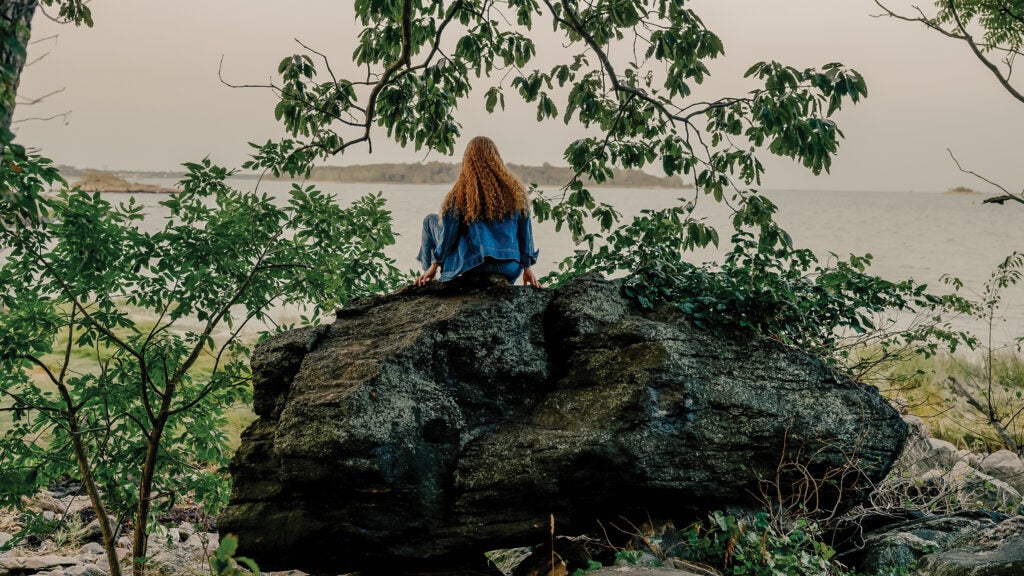No products in the cart.
Outdoor Adventure
New York City Has Tons of Wilderness to Explore—If You Know Where to Go
Manhattan, one of the most built-up places on earth, has few neglected acres. But at the far north end of the island, there are places too hilly to build on where the contours of the landscape haven’t been changed. An artist friend of mine finds all kinds of old stuff on the ground in the parks there when he wanders off the main trails. Once, in some moss, he found a clay pipe that was made in Glasgow, Scotland, in 1848, according to a stamp on it. I have found three Indian trade beads (two blue, one green) in upper Manhattan myself, with my friend’s help. You have to look in the pockets of runoff dirt that collect in little hollows after a rain.
The wildest places in all the five boroughs to my mind are in the Bronx, which also contains the city’s only freshwater river, the Bronx River. Elevated highways and railroad viaducts cross the Bronx River valley, and here and there along it you find no-person’s lands. Again, trails wind through the weeds, with the resonant traffic making the background noise. Ropes hang down from the bridge structures in certain places. I’m told that kids climb up there and swing from the ropes and try to knock each other into the river, but I’ve never seen that myself.
What I encounter mostly is daunting trash—things like discarded syringes with little pale-orange rubber corks on the needles’ ends, and elaborately damaged Citi Bikes, and the remains of small homeless encampments. Once I found a trip wire made of fishing monofilament running through the weeds. It encircled a makeshift yard around a plywood and cardboard hut. No one appeared to be home. Up above, on the railroad viaduct, the Amtrak Acela from Boston passed quickly by.
I go out exploring in all weather. One winter, in Pelham Bay Park, in the Bronx’s northeast corner, I went in search of an ossuary that an amateur archaeologist discovered in the 1960s. An ossuary is a place where bones are buried when a grave has to be moved. Bones are collected from the original burial site and reinterred somewhere else. Native people of the Lenape tribe moved their ancestors’ bones when settlement encroached. The archaeologist’s description of the ossuary’s location, in a paper he wrote, was so confusing that I decided he must have been confusing on purpose, to discourage relic hunters.
As I was scanning around in a pine forest, frustrated, a man with a walking stick passing on a nearby trail told me there was a bald eagle just up ahead, feeding on the carcass of a deer. I went the direction he pointed, turned a bend in the trail, and saw the deer. It lay on its left side as if in a hollow. The eagle had disappeared, though I felt its presence and almost heard its wings. The side of the deer accessible to scavengers had been picked as clean as an anatomical display. Its rib bones curved in an orderly fashion. The other side remained frozen and untouched against the ground.
Over the centuries, humans have changed the landscape, but there is only so much they can do to it in a place like New York, where big ecosystems meet.
I’ve seen fields of healthy, knee-high poison ivy that stretched for half-acres, and groves cordoned off with plastic tape because of the danger of Lyme-disease-carrying deer ticks, and abandoned, overgrown commuter-train stations turned into gang headquarters, apparently, with defiant graffiti on the walls and scary, naked, defaced mannequins on broken chairs—all in the Bronx.
But the most intriguing city wilderness, one that I wish I could have shrunk myself to explore, was in Midtown. I was walking on 57th Street on a sunny day when I saw a three- or four-year-old boy squatting on his haunches and looking down a subway grate. Sunlight fell on the grate in a bright shaft, the way it does among the skyscrapers. When the sun makes its way through the obstacles and high-rise shadows, it can focus like a spotlight beam.
A grown-up, paying no attention, took the boy’s hand and made him come along. The boy stood reluctantly and went, still looking back. I bent down among the hurrying pedestrians to try and see what he had seen. Beyond the grate, in a space about four feet below it, the sun lit up a scene that was reticulated by the shadow of the bars. A basic city tree around here is the ailanthus; it’s weedy and hardy and grows wherever a piece of disturbed earth will give it a chance. On a level place at the bottom of this under-the-sidewalk subway air vent or whatever it was, hundreds of ailanthus seedlings had sprouted, like a tiny rainforest as seen from a helicopter. In the filtered light, their many leaves glowed a thriving green.
The floor of this forest was composed entirely of cigarette butts. Hundreds and hundreds of butts lay scattered this way and that, some with brown filter tips, some with white filter tips, some unfiltered—a who-knows-how-long accumulation—at the feet of the ailanthus saplings. A bottle cap or two added some species diversity. The mini landscape was like a pristine ecosystem on another planet. It had been noticed and wondered at by no other human, probably, except for the boy. There was something bright and hopeful and new-world about it. I imagined rappelling down into it and exploring it.
Source link

